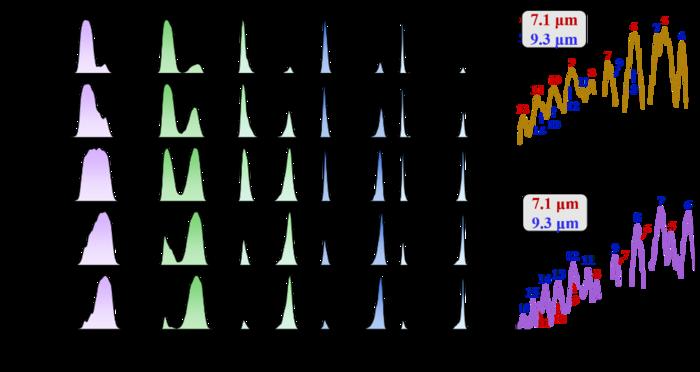As far as both the temporal and spectral domain is concerned, multi-wavelength femtosecond pulses with adaptable tunability have been extensively preferred as a result of their possible applications in regulating powerful electron dynamics, field ionization, and high-order harmonic generation.

(A) measured spectra of mir dual-wavelength tunable pulses by tuning the temporal overlap between different spectral components of the signal and pump pulses, when there is certain residual chirp and group delay, at a specific pm angle. mir dual wavelengths with arbitrary relative amplitudes are generated. (b), (c) drived by the mir dual-wavelength pulse, two sets of harmonics are exhibited simultaneously, and their relative spectral strength can be tuned. Image Credit: Ultrafast Science
Ultrafast pulses coherently synthesized by several spectral bands are an ingenious instrument to exploit or improve high-harmonic generation (HHG). For the above-mentioned applications in strong-field physics, mid-infrared (MIR) lasers gain huge attraction in significant research measures, as the pondermotive force measures quadratically with the driving wavelength.
Hence, huge demand is noticed for MIR multi-wavelength-shaped pulses. But the present techniques available for producing multi-wavelength pulses lack freedom in spectral tuning and need advanced apparatus for complex phase and noise control.
In recent times, a comparatively simple and compact technique was suggested by Houkun Liang to produce MIR pulses along with dual-wavelength spectral shaping and unusual freedom of tunability in both the lasing wavelength and comparative spectral amplitudes by integrating Martinez compressor and optical parametric amplifier depending on LGS crystal.
Two tunable means have been displayed by the output MIR spectra:
1. When the dispersion is entirely compensated, various dual-wavelength pairs at 5.6, 10 μm; 6.0, 9.6 μm; 6.6, 9.0 μm; 7.1, 8.4 μm; and 8.2 μm with an utmost average power up to 280 mW and power efficiency of 2.8% at the repetition rate of 50 kHz by fixing the phase match angle.
2. When the dispersion has been compensated partly, the comparative spectral amplitudes of a particular pair of dual-wavelength could be arbitrarily altered by regulating the pump delay.
To test the usefulness of the illustrated high-power MIR light source with dual-wavelength spectra shaping features, HHG has been driven by MIR dual-wavelength tunable pulses in a 3-mm-thick polycrystalline ZnSe plate.
As a result of the dual-wavelength tunability, the acquired HHG spectra consists of traits of spectral shaping of HHG with several groups of harmonics in both the spectral position and comparative strengths.
MIR ultra-short pulses exhibit excellent freedom in multi-wavelength spectral shaping and could activate highly sophisticated applications like THz wave generation, enhancement of HHG, attosecond metrology, tunable intra-pulse difference-frequency generation, and regulating electron localization in molecular dissociation.
Furthermore, the illustrated HHG steering technique would pave the way for new possibilities in exploring light-matter interaction and femtosecond control of electron dynamics in composite molecular systems.
Journal Reference
He, L., et al. (2023) Dual-Wavelength Spectrum-Shaped Mid-Infrared Pulses and Steering High-Harmonic Generation in Solids. Ultrafast Science. https://doi.org/10.34133/ultrafastscience.0022.